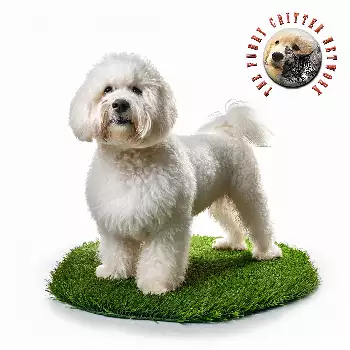The Bolognese enjoys a reputation as a generally healthy breed with a respectable lifespan of 12-14 years, benefiting from centuries of careful breeding focused on producing sound, long-lived companion dogs. The breed's development for companionship rather than extreme physical performance has contributed to maintaining moderate characteristics that support overall health and longevity. However, like all purebred dogs, the Bolognese can be predisposed to certain health conditions that responsible owners and breeders should understand and monitor throughout the dog's life.
The overall health profile of the Bolognese reflects the advantages of its breeding history, which emphasized temperament, longevity, and soundness over extreme physical traits. This focus has helped preserve a relatively robust genetic foundation, though the breed's small population size requires careful attention to genetic diversity and health testing in breeding programs. The breed's moderate size and structure contribute to fewer orthopedic issues than are seen in some other small breeds, while their lifestyle as companion dogs has protected them from many work-related health problems.
Cardiovascular health in the Bolognese is generally excellent, with the breed showing lower incidence of heart problems compared to many other toy breeds. Their moderate exercise requirements and calm temperament contribute to maintaining good cardiovascular fitness throughout life. Regular veterinary examinations that include cardiac assessment help identify any developing issues early, when intervention can be most effective. The breed's longevity often depends significantly on maintaining good heart health throughout their senior years.
Respiratory considerations for the Bolognese include their sensitivity to extreme temperatures and environmental conditions. Their small size and relatively normal facial structure generally prevent the breathing difficulties associated with flat-faced breeds, but they can be sensitive to very hot weather, poor air quality, and respiratory irritants. Owners should provide appropriate climate control and avoid exposing their dogs to extreme temperatures or polluted environments that could stress their respiratory systems.
Orthopedic health in the breed is generally good, though some lines may be predisposed to conditions common in small dogs. The breed's moderate structure and activity level typically support good joint health throughout life, though weight management remains crucial for preventing stress on joints and bones. Regular moderate exercise appropriate for their size helps maintain muscle tone and joint flexibility, while avoiding activities that could cause injury to their delicate bone structure.
Dental health requires particular attention in the Bolognese, as small breeds are often prone to dental issues including premature tooth loss, gum disease, and tartar accumulation. Their small mouths can make dental care challenging, but regular brushing, appropriate dental chews, and professional cleanings help maintain oral health throughout life. Dental problems can affect overall health by creating secondary infections and making eating difficult, so preventive dental care is essential for long-term wellbeing.
Skin and coat health considerations include the special care requirements of their long, silky coat and potential sensitivity to grooming products or environmental allergens. Their single coat requires daily attention to prevent matting and skin irritation, while regular bathing with appropriate products helps maintain both coat beauty and skin health. Some individuals may develop sensitivities to certain shampoos, conditioners, or environmental allergens that require careful management and product selection.
Eye health monitoring is important for the Bolognese, as their large, prominent eyes require protection from injury and regular cleaning to prevent irritation from facial hair. Some genetic lines may be predisposed to certain hereditary eye conditions, making regular ophthalmologic examinations an important component of preventive healthcare. The breed's facial hair can contribute to eye irritation if not properly maintained, requiring daily cleaning and careful grooming around the eye area.
Neurological health in the breed is generally excellent, though some lines may be predisposed to conditions that affect the nervous system. The breed's intelligence and normal activity levels typically indicate good neurological function, though owners should be alert to changes in behavior, coordination, or cognitive function that might indicate developing problems. Early detection and intervention can often help manage neurological conditions effectively.
Common Health Issues
- Patellar luxation (kneecap dislocation) - can range from mild grade I to severe grade IV, may require surgical correction
- Progressive retinal atrophy (PRA) - hereditary condition that can lead to vision loss, genetic testing available
- Legg-Calve-Perthes disease - hip joint condition occasionally seen in small breeds, may require surgical treatment
Recommended Health Testing
- Annual ophthalmologist examination - screening for hereditary eye conditions and early detection of problems
- Orthopedic evaluation - assessment of patella stability and hip development during growth and annually thereafter
- Genetic testing for known hereditary conditions - PRA testing and other available genetic screens for breeding dogs
Preventive healthcare for the Bolognese should emphasize regular veterinary examinations, current vaccinations, and consistent parasite prevention appropriate for their size and lifestyle. Their small size can make them more susceptible to certain diseases and parasites, while their close contact with family members requires careful attention to zoonotic disease prevention. Weight management is crucial, as even small amounts of excess weight can significantly impact their health and mobility.
Reproductive health considerations include the timing and methods of spaying or neutering, which may differ from recommendations for larger breeds. The breed's small size and delicate structure require veterinarians experienced with toy breeds for surgical procedures. Breeding decisions should always include comprehensive health testing and careful consideration of genetic diversity to maintain the breed's overall health and vitality for future generations.

